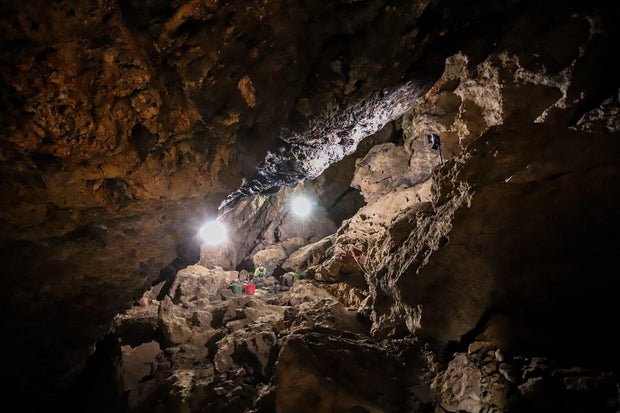A team of scientists has made an astonishing discovery in a cave in Spain. They have found grass sandals that are estimated to be 6,200 years old, making them the oldest woven grass footwear ever found in Europe. This finding is forcing researchers to reevaluate their assumptions about our human ancestors in the region.
The discovery was made by researchers from the Universidad de Alcalá and the Universitat Autònoma de Barcelona, who have been studying 76 objects that were uncovered in a cave in southern Spain many years ago. These objects provide the first direct evidence of basketry among hunter-gatherer societies and early agrarian communities in southern Europe.
Among the objects found were baskets, sandals, and organic tools made from reed and esparto grass. By analyzing the materials used to make these objects, the researchers were able to determine that they date back to the early and middle Holocene period, between 9,500 and 6,200 years ago.
“The quality and technological complexity of the basketry makes us question the simplistic assumptions we have about human communities prior to the arrival of agriculture in southern Europe,” said Francisco Martínez Sevilla, a researcher in the Prehistory Department of the University of Alcalá.
One of the co-authors of the study, María Herrero Otal, explained that this research provides a unique opportunity to study social aspects of early human groups. The fiber-based materials discovered are not commonly found at archaeological sites, making this discovery particularly significant.
Otal also highlighted that the use of esparto grass can be traced back at least 9,500 years ago and is still being used today in Spain and Portugal. It’s remarkable to see how this tradition of using the same techniques and raw materials has endured for thousands of years.
The study describes the sandals found in the cave as “the earliest and most widespread collection of prehistoric footwear in the Iberian Peninsula and Europe, surpassing other regions.” The findings were published in the journal Science Advances.
The objects were originally discovered during mining activities in the Cueva de los Murciélagos, also known as “cave of the bats,” in the 19th century. However, this study has determined that the materials are approximately 2,000 years older than previously believed.
The researchers attribute the preservation of these fiber-based objects to the low humidity and cool, dry winds in the cave, which prevented bacteria from causing decay over thousands of years.
The study identifies two types of footwear found at the site. One type has a consistently woven sole, while the other type has a harder “central core.” Although no laces were found with the first type, the researchers suggest that the second type may have had fibers connected to a braid that could be tied around the ankle.
Denial of responsibility! Vigour Times is an automatic aggregator of Global media. In each content, the hyperlink to the primary source is specified. All trademarks belong to their rightful owners, and all materials to their authors. For any complaint, please reach us at – [email protected]. We will take necessary action within 24 hours.




